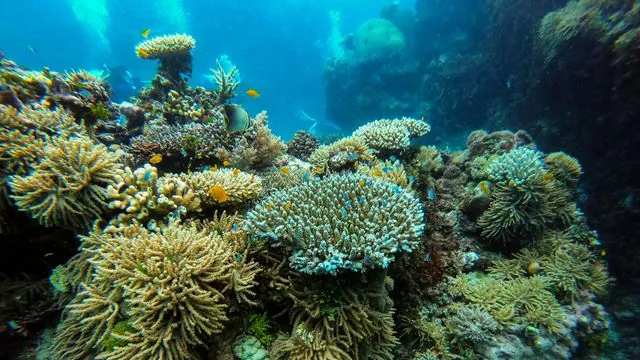
Revolutionary Cement Technology Set to Save Coastal Ecosystems!
2024-09-25
Introduction
Coastlines play a crucial role in both our ecological balance and economic sustainability. These vibrant ecosystems, which include coral reefs, marshlands, and mangroves, not only foster biodiversity but also act as natural shields against erosion, storms, and flooding. Furthermore, they serve as carbon sinks, helping to mitigate greenhouse gas emissions, while supporting local economies through sustainable fisheries and tourism.
Challenges Faced by Coastal Ecosystems
However, human activities like urban development, pollution, and excessive land use are threatening the stability of these natural coastlines, pushing them toward potential devastation. The aftermath of such destruction could have dire consequences, not just for marine life but also for communities that depend on these ecosystems for their livelihoods.
Innovative Solutions
To combat these issues, researchers have turned to innovative solutions, like engineered coastlines. While artificial structures such as dikes can offer protection from natural disasters, they often fail to support essential ecological functions. Enter a groundbreaking study published in the reputable journal Biointerphases, where scientists from Southeast University and the University of Chinese Academy of Science reveal a novel concrete solution aimed at safeguarding our coastlines.
Research Findings
According to lead researcher Xiaolin Lu, "We've recognized the need for new substrate materials that minimize biological toxicity to marine organisms." Current artificial reef blocks use a cement with a high pH of +12, which is detrimental to marine biofilm—a community of microorganisms crucial for food webs and ecosystem health.
Development of New Cement Mixture
In a bid to create a safer alternative, the research team developed a special mixture of limestone and clay cement that hardens underwater. They incorporated polyacrylamide, typically used in water treatment, alongside chitosan, a natural polymer derived from crustacean shells. These additives were strategically mixed into the cement, both enhancing its properties and serving to create a more hospitable environment for marine life.
Experimental Results
In their experimental setup, both bulk and surface treatments of this new cement were subjected to rigorous testing for mechanical integrity and the potential to promote biofilm and coral growth. When placed in a controlled sea tank, researchers observed promising results: After just two days, biofilm was thriving on the surface-treated samples, showing superior growth after 30 days compared to untreated controls. Notably, transplanted coral samples also flourished better on the surface-treated substrates.
Insights on Mechanical Properties
While the bulk-treated samples displayed some reduction in biofilm and coral growth, their mechanical properties were not as robust as the surface-treated variants. This indicates a need for balanced approaches in creating structures that can both endure environmental pressures and support marine life.
Future Implications
Lu emphasizes, “These innovative treatments demonstrate necessary biocompatibility, encouraging biofilm growth while fostering coral health.



 Brasil (PT)
Brasil (PT)
 Canada (EN)
Canada (EN)
 Chile (ES)
Chile (ES)
 España (ES)
España (ES)
 France (FR)
France (FR)
 Hong Kong (EN)
Hong Kong (EN)
 Italia (IT)
Italia (IT)
 日本 (JA)
日本 (JA)
 Magyarország (HU)
Magyarország (HU)
 Norge (NO)
Norge (NO)
 Polska (PL)
Polska (PL)
 Schweiz (DE)
Schweiz (DE)
 Singapore (EN)
Singapore (EN)
 Sverige (SV)
Sverige (SV)
 Suomi (FI)
Suomi (FI)
 Türkiye (TR)
Türkiye (TR)